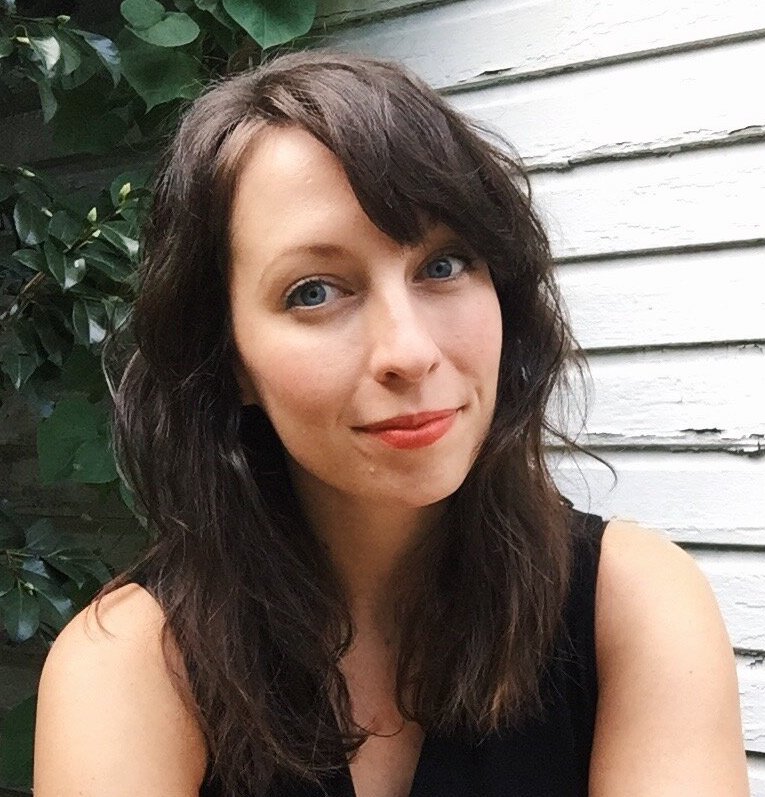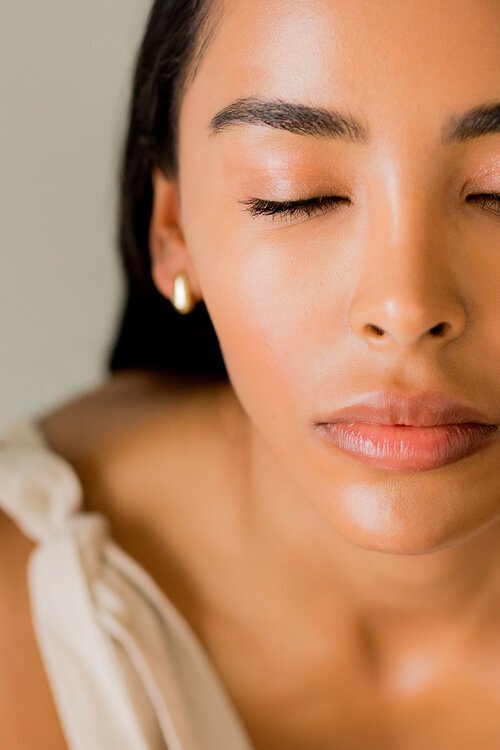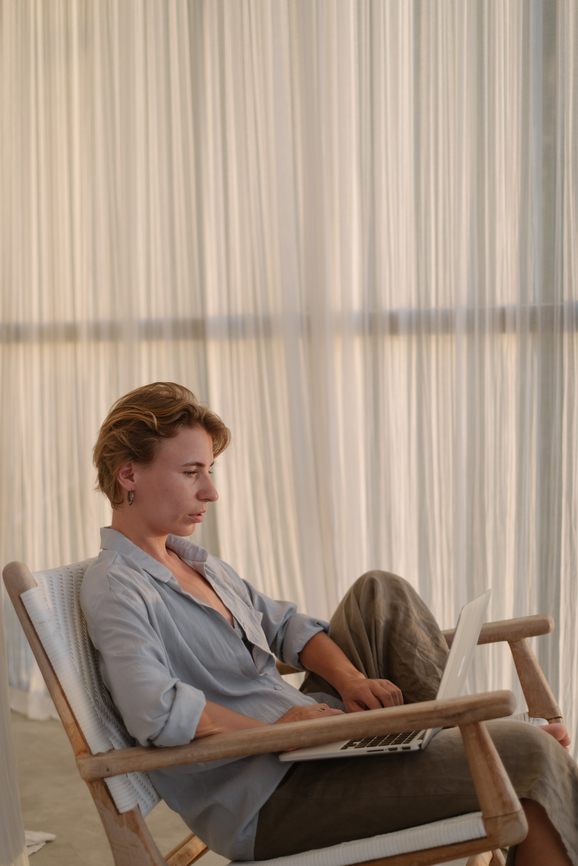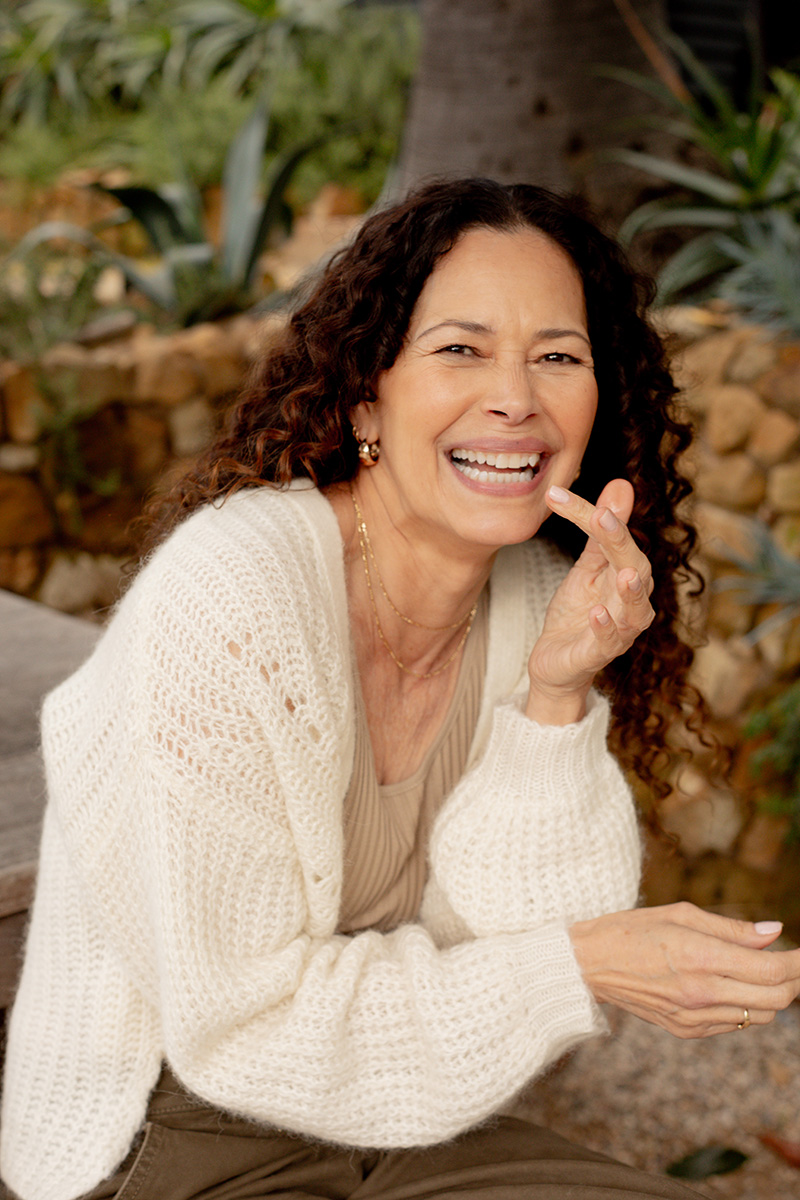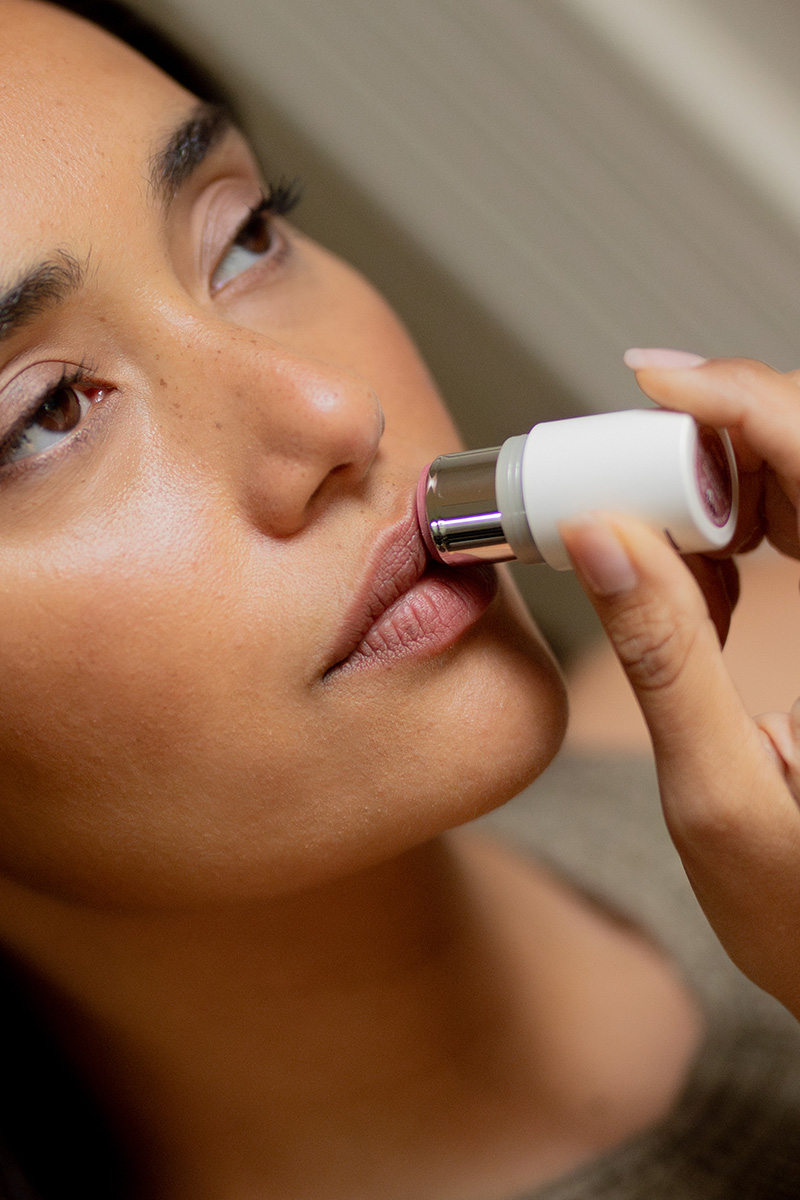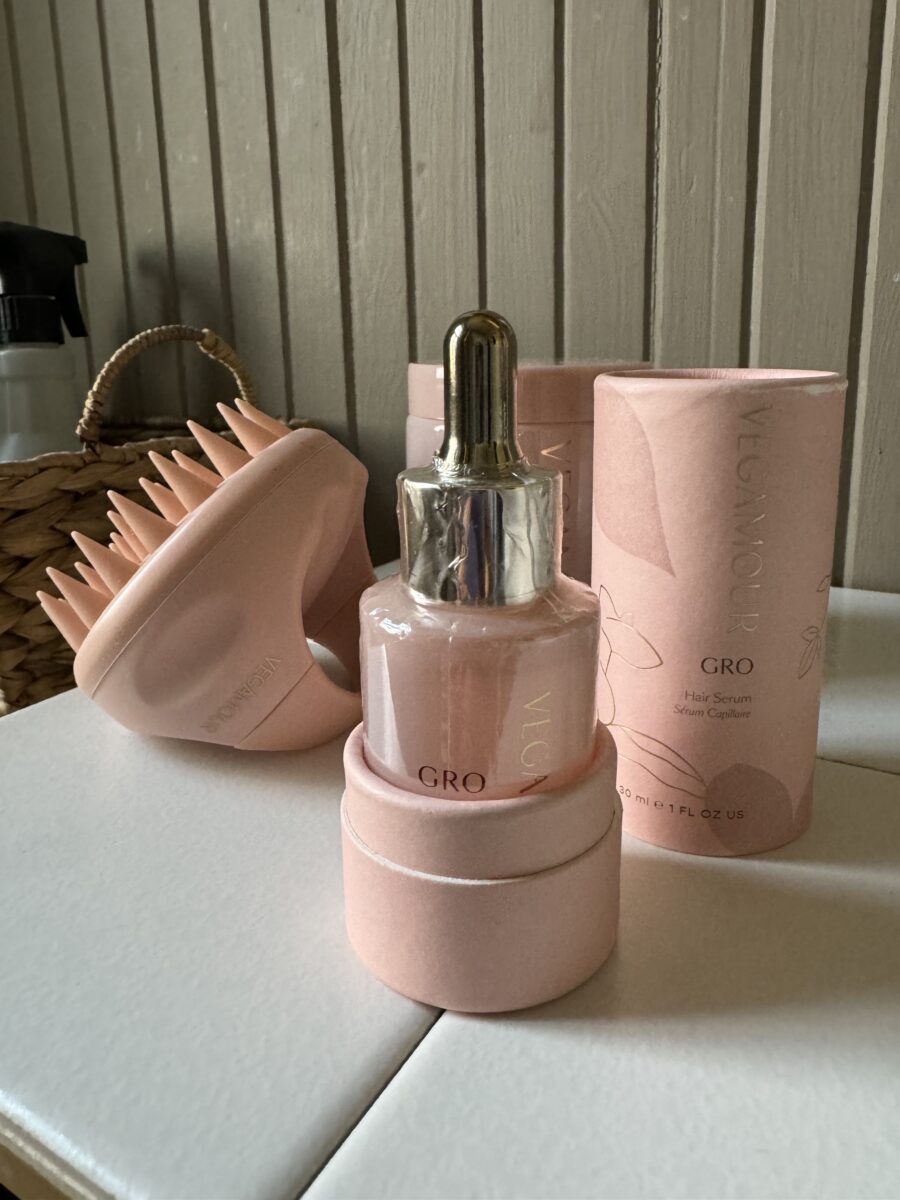
Does Vegamour Really Help Support Hair Growth? Our Editor Reviews
Summary: After testing Vegamour’s GRO Hair Serum, GRO Biotin Gummies, and the GRO Revitalizing Scalp Massager, I noticed a definite increase in the density and appearance of my hair, particularly around my temples and part. Used daily as instructed for three months, combined with other healthy hair lifestyle changes made a noticeable difference in the quality of my hair. I think this would be a great routine for anyone looking to support their hair wellness, especially postpartum moms during their hair growth cycle after baby.
PROS
- The serum is light and not remotely oily, so it didn’t make my roots greasy between washes.
- The gummies are delicious! Looking forward to the little treat was an easy way to remember to use the serum and establish a new daily routine.
- I love the massager, which I used both for the serum and also just as a kind of pleasant stress-reliever.
- The packaging is mostly glass, which means the products not only look lovely on my dresser but are also sustainable.
- I think it worked! Combined with lower heat styling, a break from color, and a new custom hair product routine, this is hands down the longest and healthiest my hair has ever been.
CONS
- The dropper for the serum is too short to reach the bottom of the bottle, so I couldn’t get the full product out without getting creative (aka, pouring it into an old contact case for easier collection).
- I was concentrating on my part, hairline, and temples, but if you are looking to apply the serum all over your scalp, some reviews note that there might not be enough for a full 30 days in the bottle.
- The products come wrapped in a sealed tight plastic that was really challenging to get off!
- It’s not cheap. With the only guarantee hinging on consistent use for three months, a three-pack of serum comes in at $139, and a three-month supply of gummies is $108. (The massager is a very reasonable, one-time purchase of $18.)

I have always had shorter hairs along my hairline that just didn’t seem to want to grow in. Poofy and attempting to curl, most of my childhood photos reveal a moppish head of hair not unlike my over-groomed Barbie’s.
As a teen of the early aughts, I took a flat iron to the stubborn tufts at my temples until they were, if not exactly better, at least emo-adjacent and more of a look. The Houston humidity did me no favors, but box dyes and heat styling changed the texture of my hair enough that I could sometimes pretend I’d successfully covered up my strange little hairs. That is, until other people commented on them.
“Poofy and attempting to curl, most of my childhood photos reveal a moppish head of hair not unlike my over-groomed Barbie’s.”
I will never forget one instance in particular: In my mid-twenties, I went to see a new hair stylist for the first time. After running her fingers over my scalp and fluffing out my hair, she looked at me through the mirror and confidently asked how many children I had.
“What? Oh, no kids,” I told her.
“Huh,” she said, tapping her fingers against the thin spots above my ears. “Usually this kind of thing only happens after you have a baby.”
That was the first time I realized that my baby hairs weren’t only short, but they were also creating the appearance of thinness that was visible to others. I was mortified.
Why didn’t these hairs grow? I could suddenly see what sometimes looked like bald spots on my temples all the time. A tight ponytail or carelessly clipped updo really highlighted the area, and I’d self-consciously untag myself on Facebook if a candid photo showed too much scalp.
“I’d self-consciously untag myself on Facebook if a candid photo showed too much scalp.”
I got really good at flipping my part around and letting whatever version of bangs or face-framing layers were in vogue disguise the thin sections of my hairline. I learned my angles for photos and I worked them. I never got to the bottom of the issue, but I was good at fluffing out my volume and natural curls to more or less help me keep the whole thing out of sight and out of mind.
And then I had a child in my early thirties. Several months postpartum, the soft little short hairs that had never seemed to grow on my temples did something totally new. They all fell out.
How does hair grow? And why do so many women lose hair postpartum?
Postpartum hair thinning and hair loss is an extremely common (though not universally experienced!) occurrence called telogen effluvium. For many people, hair might shed in larger amounts in the shower, with some women describing it as “clumps” coming out while brushing or bathing.
Hair growth occurs in four stages. (Keep in mind that not every head of hair on your head is in each growth phase at the same time): The anagen phase is active hair growth, lasting between two and six years. Most of our hair (85% to 90%) is in this phase at any given time.
“Postpartum hair thinning and hair loss is an extremely common (though not universally experienced!) occurrence called telogen effluvium.”
The catagen phase is the transitional phase where the hair follicles shrink, and the telogen phase is a resting period that lasts about three months. Then the follicle releases the hair, which is the exogen phase, which we experience as shedding. (Fun fact: It is normal to lose 50-100 individual hairs a day!)
In pregnancy, hormonal changes cause higher numbers of hair follicles to remain in the anagen phase. This is why you might hear about pregnant women having lush, rich hair, which people sometimes attribute to the prenatal vitamins (they don’t hurt!). I definitely experienced a feeling of thicker hair during my pregnancy and the months immediately after giving birth, and I remember when I started noticing that I wasn’t really shedding in the shower at all. Pregnancy does so many unexpected and not exactly thrilling things to the body, so this one stood out as a real win.
When the regular hair cycle resumes 3-6 months postpartum, a larger number of hairs begin shedding all at once. While this experience can be alarming for some people, it’s important to note that dermatologists do not consider this true hair loss, but rather excessive hair shedding. Generally, you can expect your hair to grow back to its original fullness.
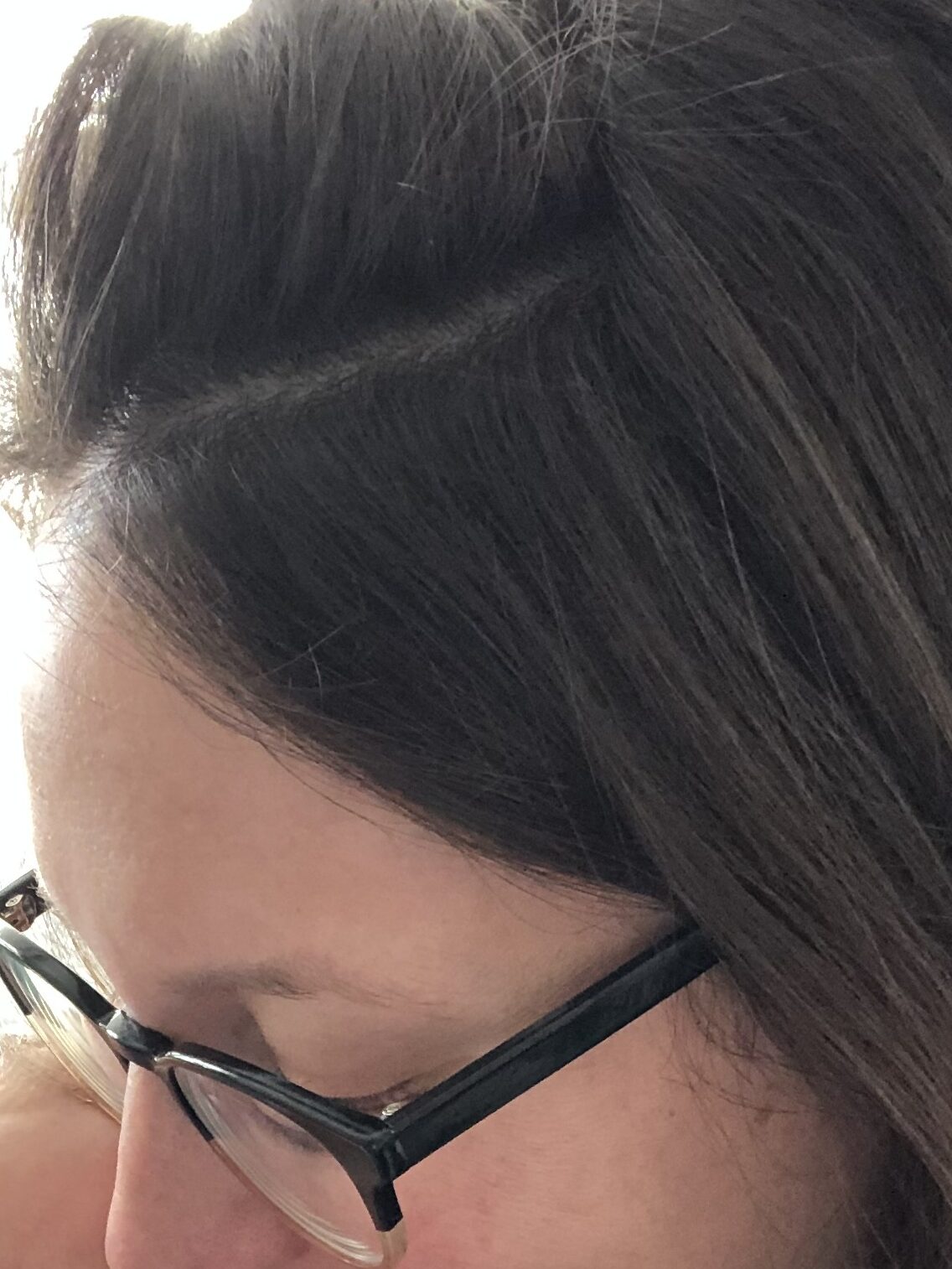
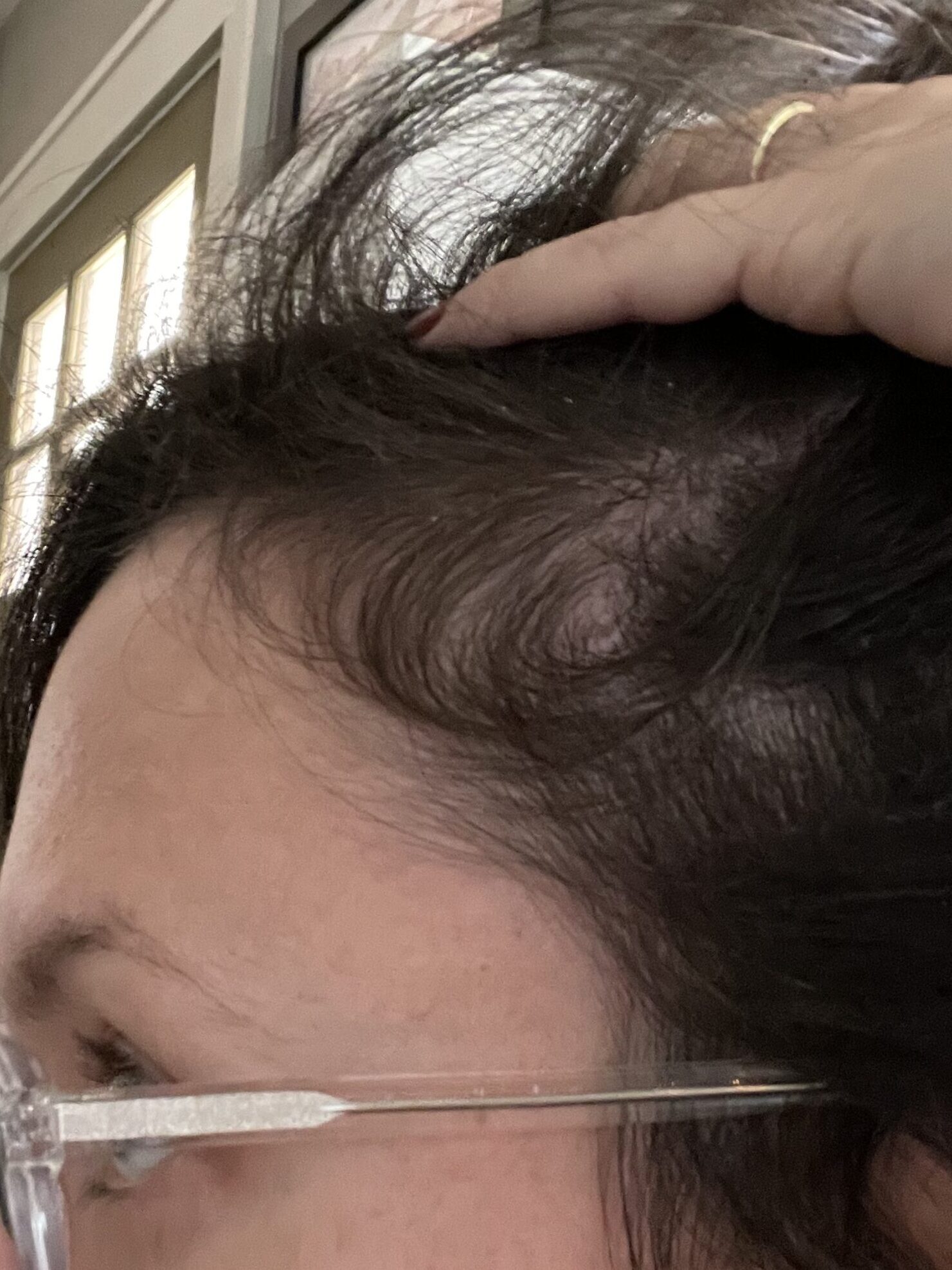
And mine did. Only my “original fullness” was not, well, full. I realized that all those years I’d spent thinking I had bald spots on my hairline were actually the good ol’ days. I longed for the baby hairs, puffy frizz and all, and I leaned hard on headbands that had mercifully come into fashion to get me through the regrowth stage.
Which is an extremely long way of saying: I had the opportunity to test out Vegamour’s award-winning, internet-famous GRO serum, gummies, and scalp massager, which promises that it “leaves hair looking thicker, fuller and healthier in as soon as 90 days.” And I absolutely leapt at the chance.
About Vegamour and their GRO products
Vegamour is a hair wellness brand that uses clinically tested plant-based ingredients to promote long-term hair health. With a holistic approach to hair wellness (note, hair *wellness* not hair *care*), the brand doesn’t approach each hair issue individually with quick fixes, but instead combines bioavailable, plant-based ingredients, enzymes, and proteins in what they call “the optimal ecosystem for hair wellness” that addresses the full spectrum of hair health.
The brand uses four core pillars to guide its approach:
- Bioavailability: Ingredients are only effective if they can be properly absorbed and properly synthesized into the body. The brand uses biomolecular technology to ensure that each plant-based ingredient in every product is optimized for maximum efficiency.
- Clean, 100% Vegan Ingredients: Vegamour believes that great hair should not come at the expense of animals. The brand is Leaping Bunny certified cruelty-free and vegan, and they never use toxic chemicals that might harm our bodies or the environment.
- Holistic Hair Wellness: Every product and each ingredient works in tandem to form a complete, holistic approach that considers all of the underlying factors that contribute to the beauty and health of hair.
- Science-Backed Results: Every ingredient in every product is clinically tested for purity and optimal efficacy.
Sounds good to me! The GRO products have an impressive reputation, with over 3,000 five-star reviews, most with photos that are downright inspirational. Their products at large have over 12,000 five-star reviews, many with impassioned and detailed comments. With people treating everything from alopecia to postpartum shedding, and others simply looking to grow out their hair or get a little more fullness, the reviews piqued my curiosity to a fever pitch. I had to see for myself.
My hair goals going in
Full disclosure: I have been on a journey with my hair that started a few months before adding in the Vegamour products. I don’t think that negates the effects of the GRO products, but I do think that it contributed to what is, no question, the fullest, healthiest head of hair I’ve had since I brought home my first ammonia-based boxed dye more than twenty years ago.
I recently decided it was time I go all-in on the ultimate hair goal, the dream that has eluded me since my childhood: Mermaid hair. Aka, hair that is long enough and thick enough to cover my boobs.
“I’ve never quite grown my hair past the tops of my shoulder blades, which I was told was my ‘terminal length,’ or, the longest my hair could grow.”
I’ve tried for mermaid hair before, but every time I’ve committed to growing out my hair, I get impatient. A year into the process I inevitably chop it off, or, if I somehow make it to two years, I’ll decide to color it, just to shake up another maintenance “just a trim!” appointment. The color would look great, but the hair cuticle would become damaged, causing the ends of my hair to eventually break off.
Maybe because of that color-related breakage, I’ve never quite grown my hair past the tops of my shoulder blades, which I was told was my “terminal length,” or, the longest my hair could grow. All evidence seemed to support this: Years of thinking my hair was finally “long” now reveals photos of my hair looking thin and frayed at the ends. And of course, the thinness at my temples and part remained.
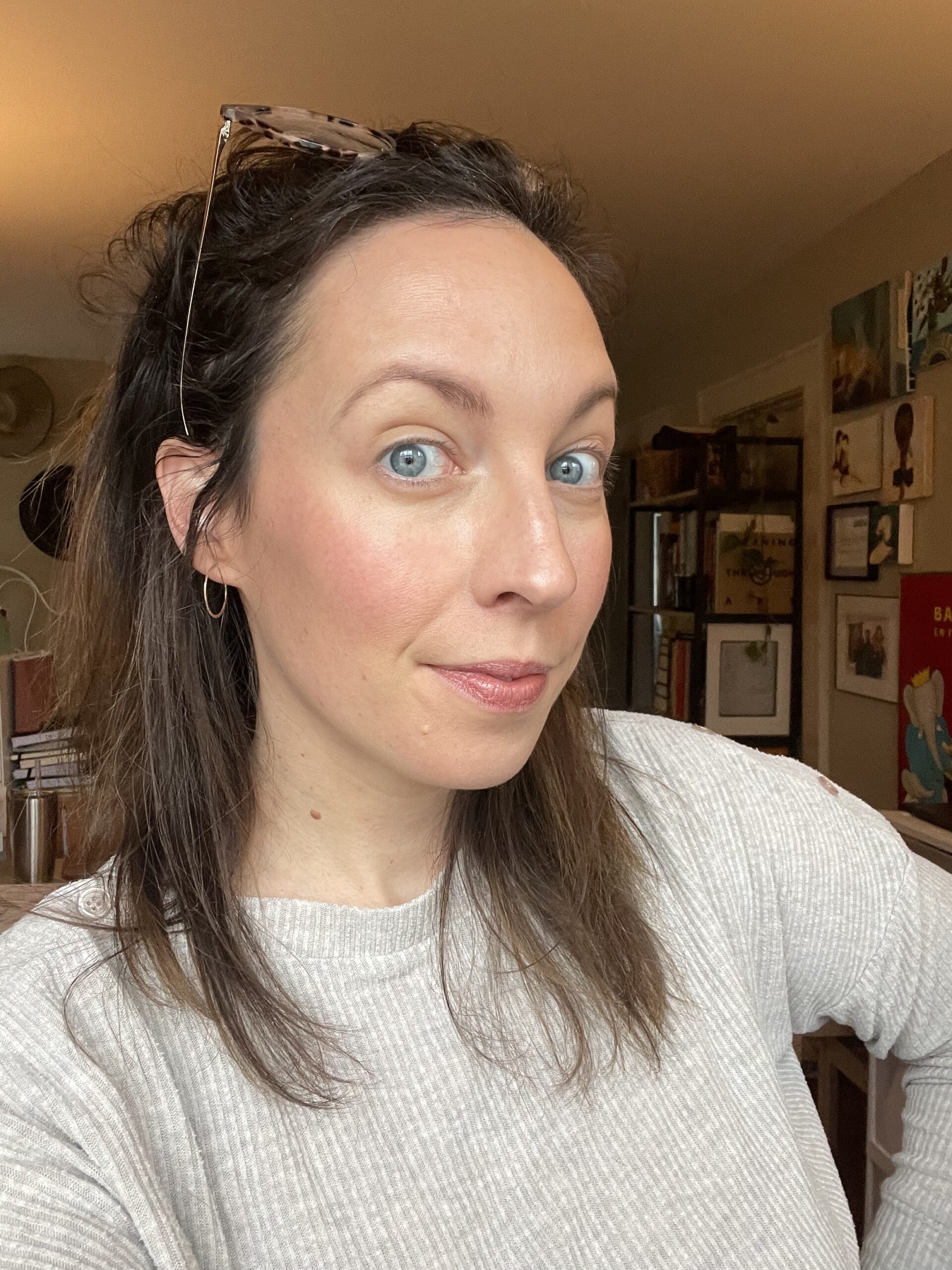
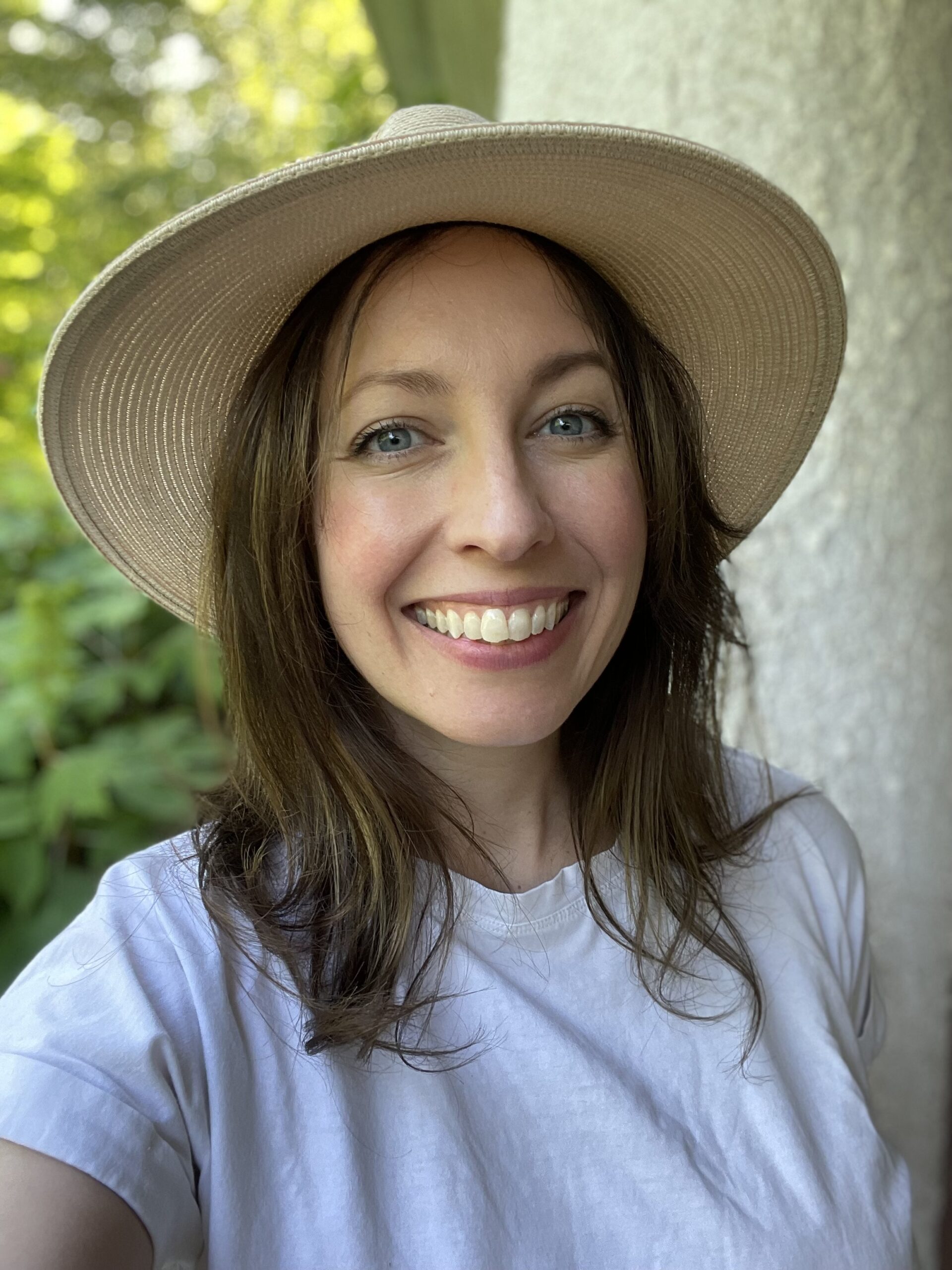
Committing to my mermaid hair goals meant making some changes in my somewhat disjointed, heat- and color- and drugstore-product-heavy habits. In addition to the Vegamour regimen, I also made a few other notable changes:
- I stopped dying my hair. My stylist was doing a really lovely lived-in balayage that grew out without much fuss. Turns out, I have like, really really really dark hair, and the texture changed completely without the brittle, blown-out cuticles from all the color lifting we were doing.
- I only heat style once a week at most, and air dry the rest. I use a leave-in conditioner, a heat protectant, and a hair oil.
- I wash my hair twice a week. My hair is extremely dry, and without the extra products to facilitate constant heat styling, my hair and scalp usually feel and smell clean for four days.
- I signed up for a Prose subscription with a personalized care system that I’ve been using since December, including a pre-wash hair mask, a shampoo, and a conditioner. I think this has been a game changer to treat my hair, specifically because the formula addresses environmental factors and even the type of water hardness typical for the city I live in.
I share all of this because hair is deeply personal. Not only are all of our needs distinct, but what we want for our hair, how much effort we are willing to put in, and how much money we are able to spend to achieve our goals all play into the experience. It’s important to have this context because there is never a one-size-fits-all approach to something like skin and hair.
Alright alright, let’s get into it!
My experience using Vegamour for 90 days
I was sent a three-month supply of the GRO Hair Serum and the GRO Biotin Gummies, along with the GRO Revitalizing Scalp Massager. Everything came in a recyclable cardboard box, packed in paper. The products were all laid out in their own individual cardboard boxes, which were also recyclable. I was pleased to see that the containers for both the gummies and the serum were glass, even the dropper (though the top of the dropper and lid of the gummies are both indeed plastic). I should note here that though it wasn’t an issue for me, some reviewers said their glass droppers broke. 😬
There are two notes about the packaging here, both for the serum: It was sealed in the sort of shrunken, hard plastic with a perforated edge that, in theory, is meant to help the consumer open it easily. But this consumer had to take an X-acto blade to all three, since the plastic just shred in tiny pieces and wouldn’t come off. This is a personal pet peeve, so take that for what it’s worth!
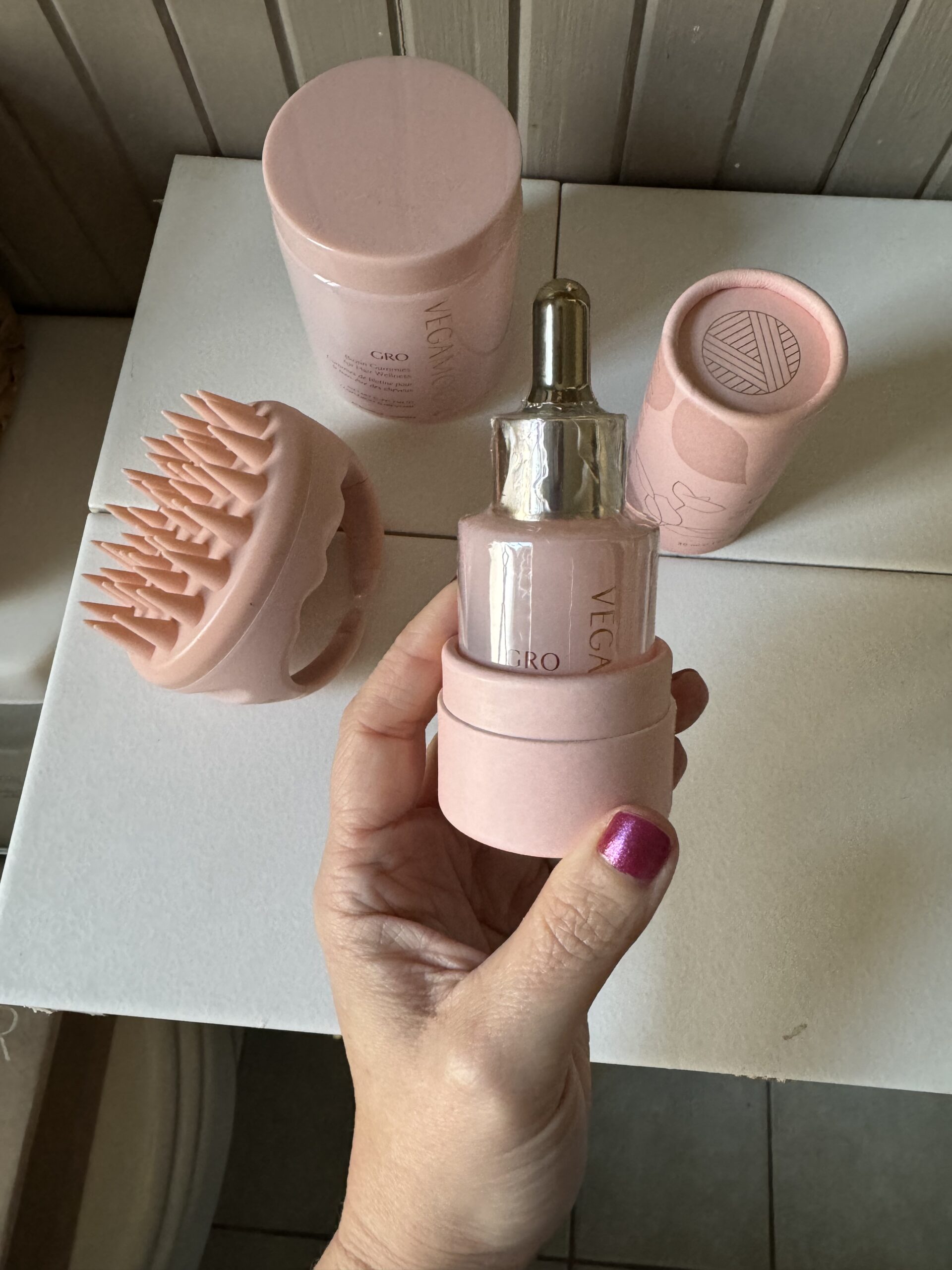

The second thing to note about the serum is that the dropper is too short, and does not reach the bottom third of the bottle. I ended up pouring it into the new bottle, or into an old contacts case to get it out, though once I even just poured it directly into my hands and massaged it into my scalp that way. So while the dropper is cute, I’m not sure it’s strictly necessary, and it’s definitely not functionally ideal.
I set the products on my dresser where I would see them, to help establish a new routine. I’m kind of a gummy fanatic, so this wasn’t too hard: I looked forward to eating my little treat. Each vegan gummy contains biotin and folic acid, which combined have a powerful effect on your hair. Biotin strengthens the hair shaft and supports elasticity to prevent breakage, and folic acid (aka folate or B9) helps to treat deficiencies and is essential for proper cell growth and function. Vitamins B5, -6 and -12 support the body’s production of keratin and collagen, while vitamins A, C and E neutralize follicle-damaging free radicals. The gummies also contain zinc, which helps to balance and maintain scalp health.
They say the gummies are strawberry-flavored, but it was a little peachier or even vaguely citrusy to me. In any case, fruity, light, and delicious! It’s a soft gummy, like a fruit slice, not like a gummy bear. Eating it would then remind me to apply the serum.
“I set the products on my dresser where I would see them, to help establish a new routine.”
You can put the serum on towel-dried or dry hair, and I did both. I filled the dropper and applied it to the parts of my hairline that are the most sparse, mostly along my part and temples. Sometimes I massaged it in with my fingers, not unlike the way I work shampoo into my scalp. But I more often used the massager, which is made of silicone and the brand says helps to stimulate the scalp to promote growth. Sometimes the silicone would catch my dry hair, and that didn’t feel great. However, the experience was otherwise pleasant, and the large hand-shaped handle made it comfortable to grip and use.
I stuck to the routine every day for three months except for one weekend trip away.
The before and after
Alright what are we all here for, right? Bring on the photo evidence! And I definitely saw a difference in my hair during these three months.
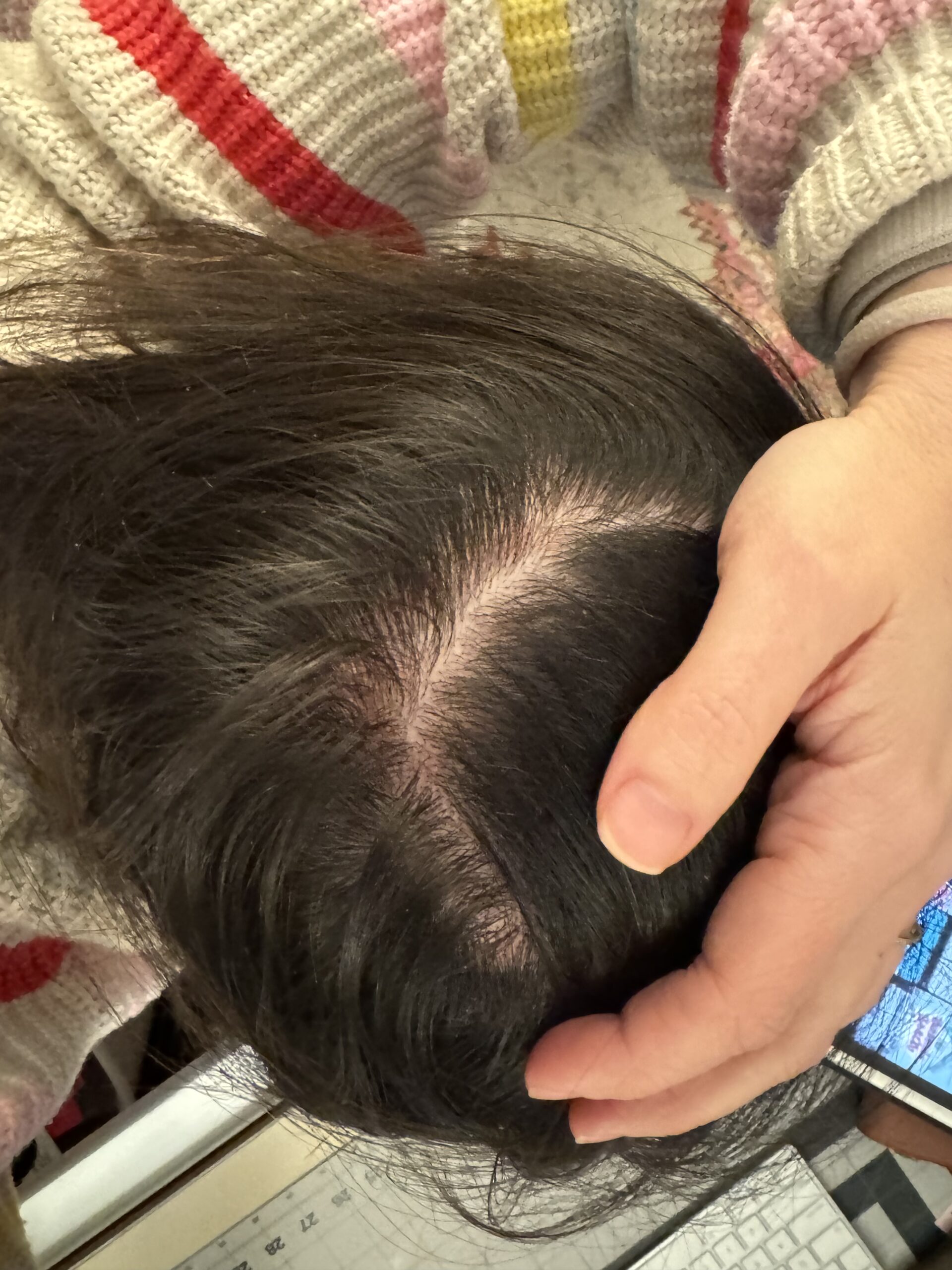
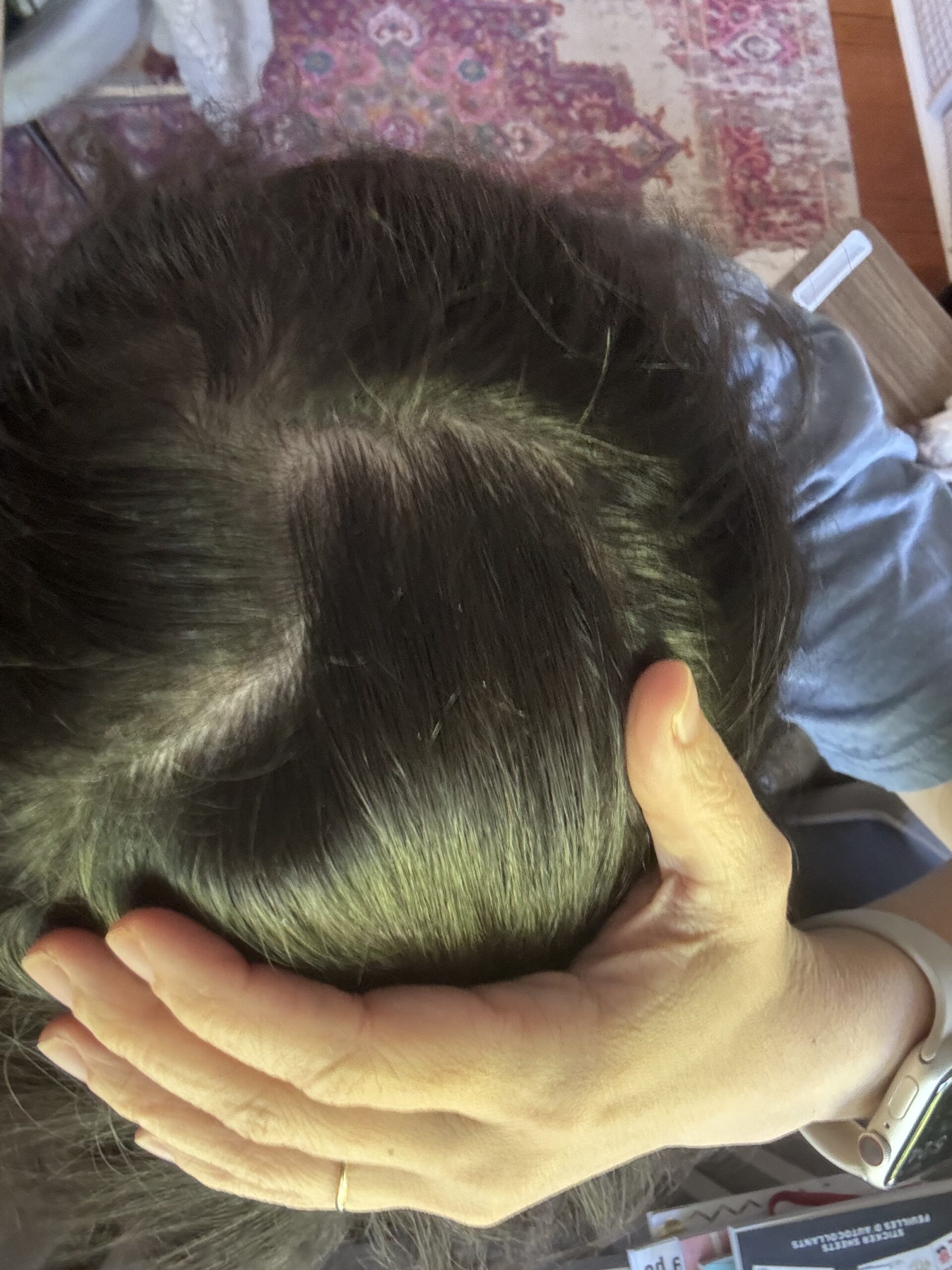
The stylist I’ve been going to for eight years also noticed the change. She says I have a lot of hair, only the strands themselves are thin. But she noticed that my scalp seemed healthier and the strands denser. It definitely feels that way to me!
To make this extra hard on the product, I decided to change up the documenting formula. Instead of a raggedy before image followed by a dramatically glamourous after shot that can exaggerate the results, I did the opposite: a glamourous before image, and a raggedy after. So no tricks to hide behind with makeup and lighting!
“Instead of a raggedy before image followed by a dramatically glamourous after shot that can exaggerate the results, I did the opposite.”
I got my hair done on February 3, 2024, a few days after starting Vegamour. This before pic is my hair at its freshest and cleanest, straight from the salon chair. And my after photo is from May 1, 2024, where I am rocking two-day old air-dried hair, at 6:30pm after a run. Even with my natural curls, which typically make my length seem about two-three inches shorter, I think my hair is visibly thicker and longer than it was three months ago.
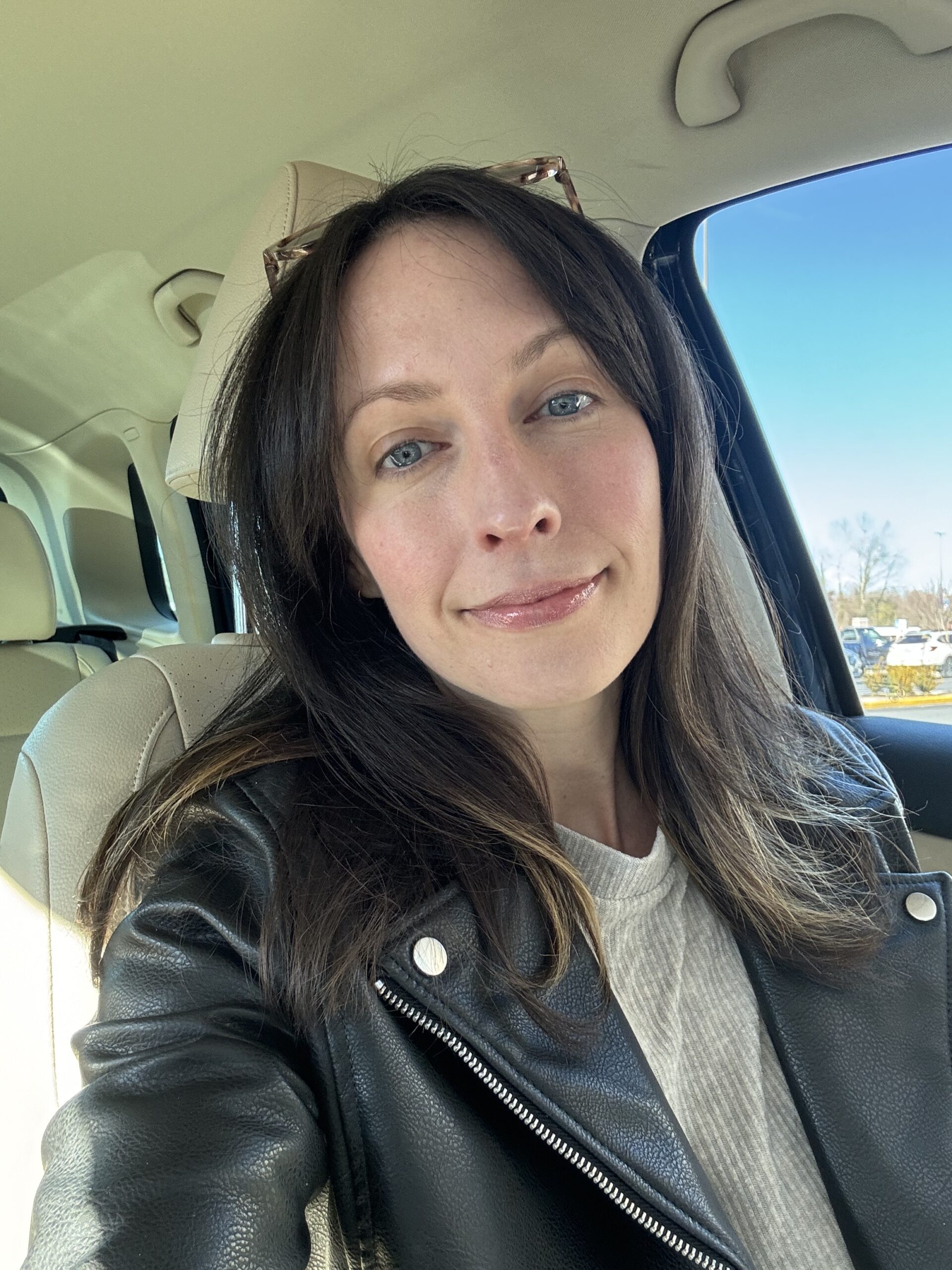
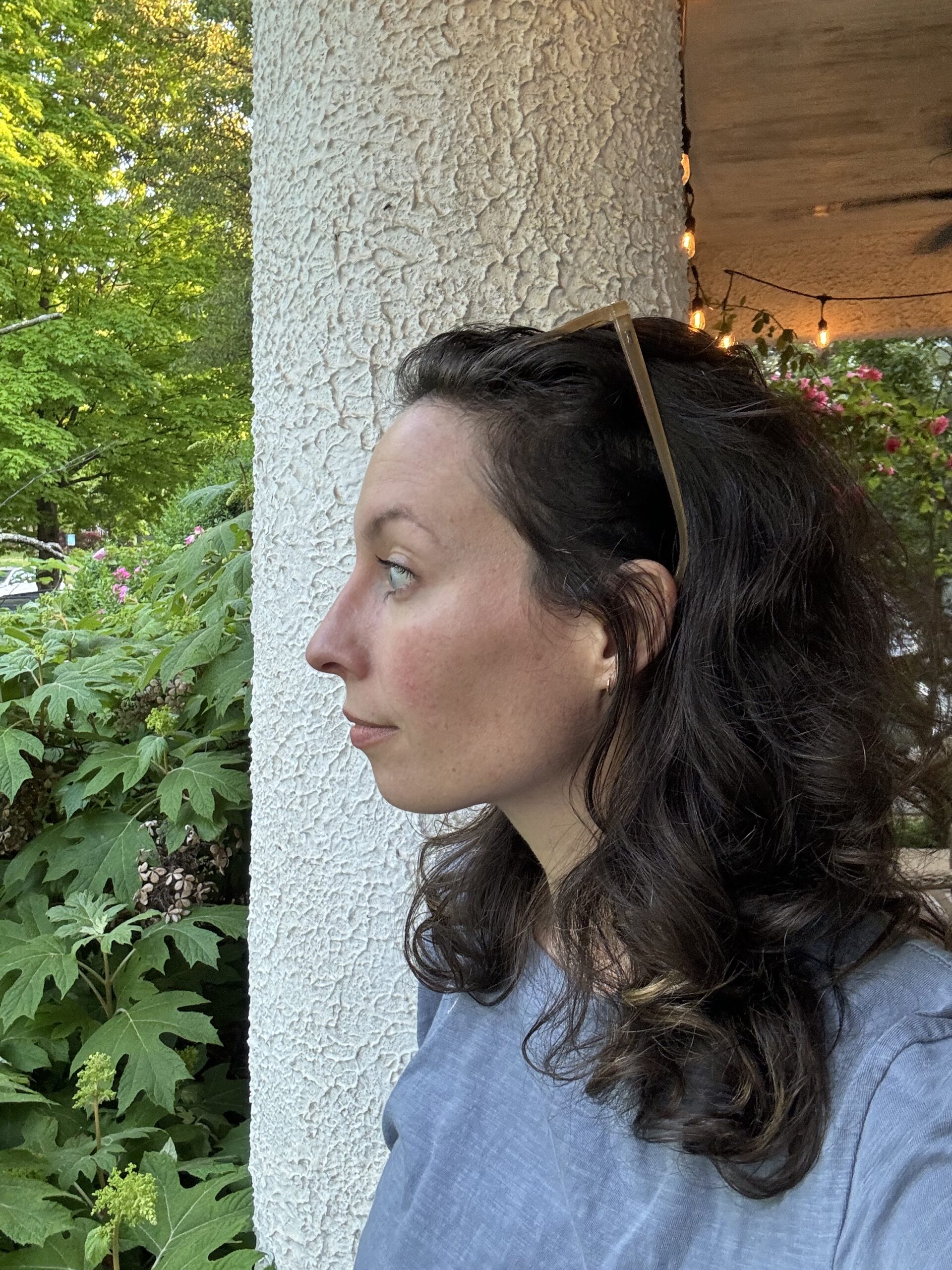
I’m still learning how to let my curls do their thing, but to be able to achieve both length and definition on a hot humid day means that the hair is in great shape. I was honestly sort of shocked when I started reviewing images for this post. I could definitely feel a difference, but looking at images of my hair over the years made the story pretty clear: I’ve finally cracked the code on my hair’s needs.
My final verdict
If you’re interested in taking your commitment to hair wellness to the next level, I recommend trying out the Vegamour GRO line. I also recommend taking a cue from the brand and being as holistic as possible. Make sure you’re using clean products that won’t strip and damage your hair, minimize your heat styling, and look into color options that have the gentlest effect on your strands.
Consider sleeping with your hair on silk pillowcases to reduce pulling, and skip the high tight ponytails that can strain and break the strands before they get a chance to grow (I opt for French braids or just pulling my hair through the back of a baseball hat on runs). I’ve even started sleeping with my hair in a claw clip on the top of my head, which is loose enough not to pull while still keeping it off my face.
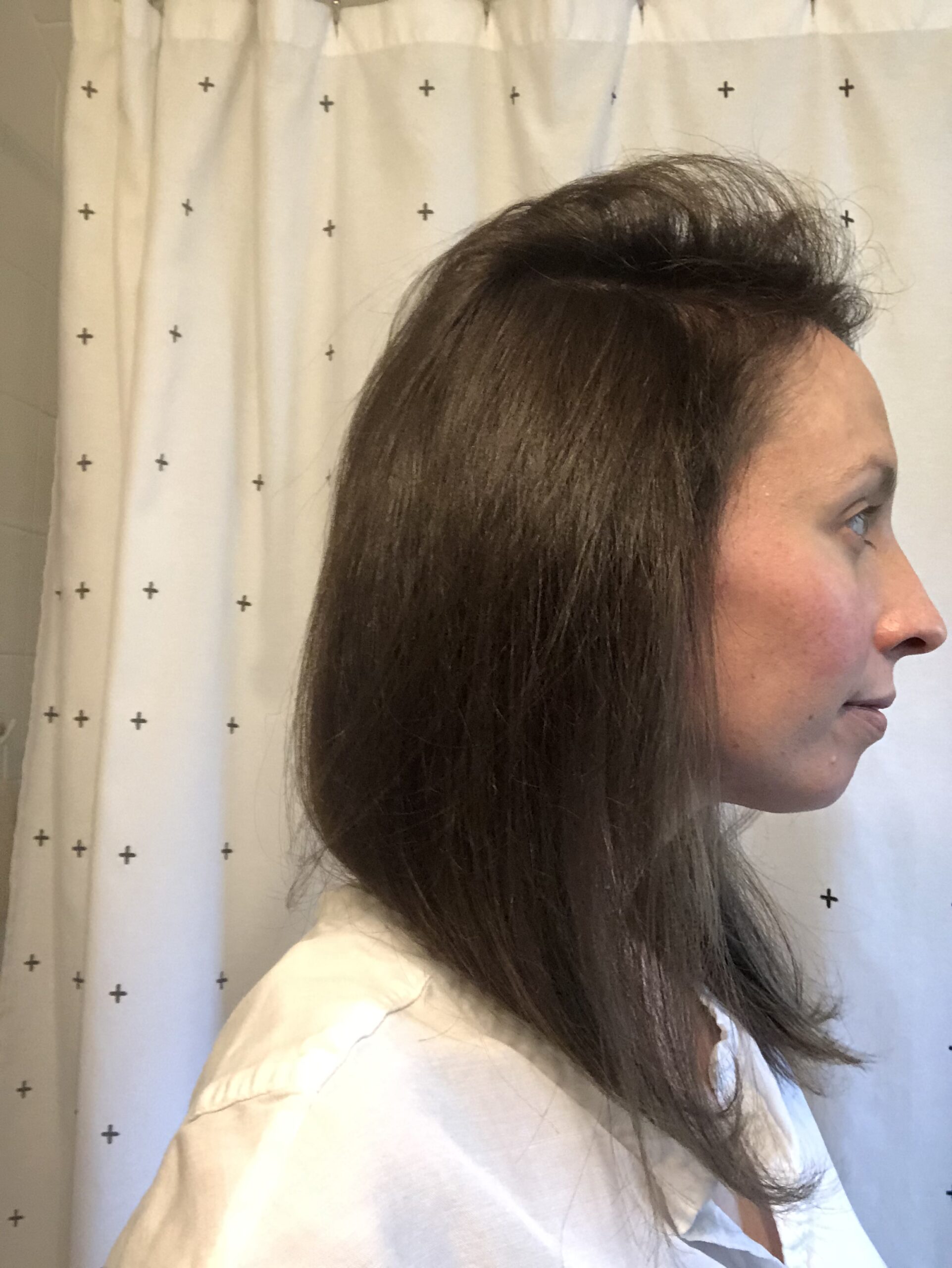
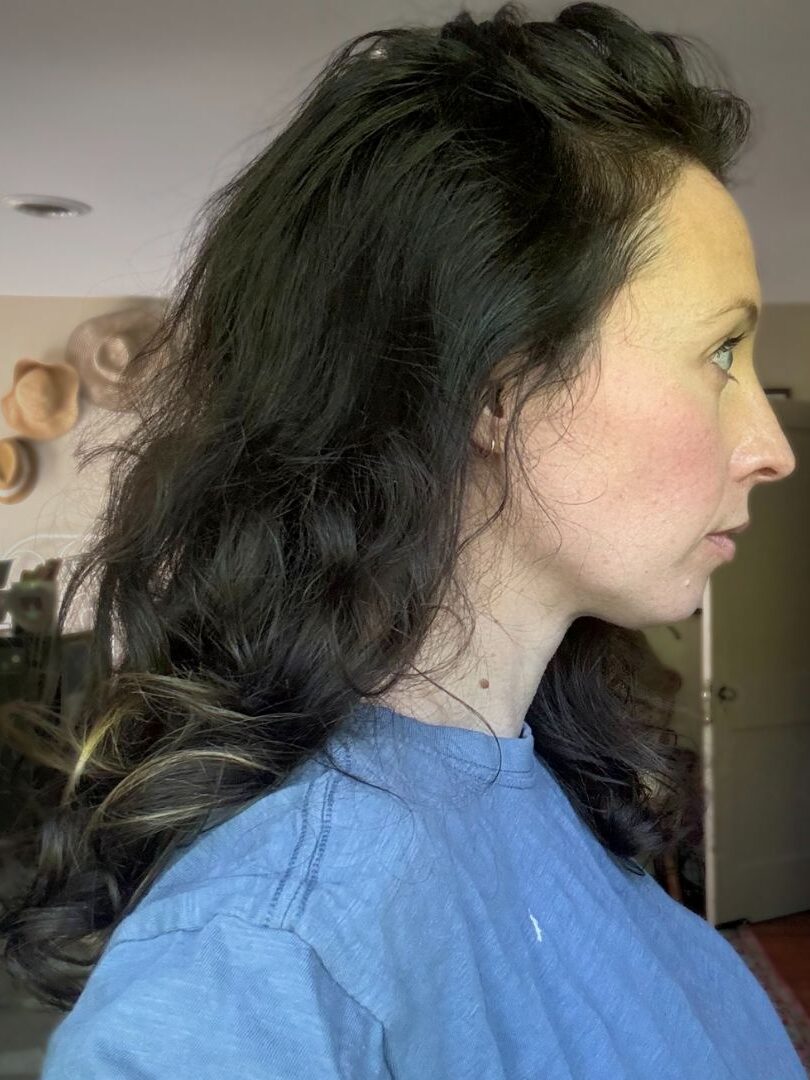
Do I still have thinness along my hairline and temples? Sure. But as I said, I always have. I am happy to accept myself as I am. Going on this hair journey hasn’t been about trying to look like someone I’m not, but nourishing and caring for my hair so it can be at its best. Vegamour is a brand aligned with this goal, with their commitment to holistic hair wellness above all.
So yeah, let’s just say I’m a fan. And I’m closer to mermaid hair than I’ve ever been!
Stephanie H. Fallon is a Copywriter, Content Producer, and Contributing Editor at The Good Trade. She is a writer originally from Houston, Texas. She has an MFA from the Jackson Center of Creative Writing at Hollins University. She lives with her family in the Blue Ridge Mountains of Virginia, where she writes about motherhood, artmaking, and work culture. You can find her on Instagram or learn more on her website.
